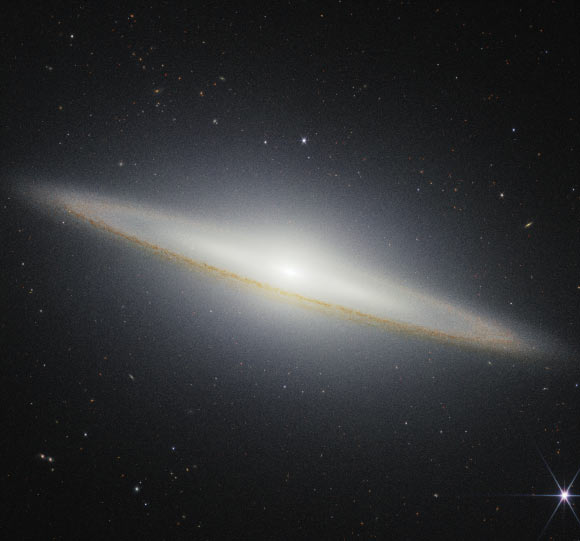Now Reading: Webb Telescope Captures Stunning View of Sombrero Galaxy in Infrared
-
01
Webb Telescope Captures Stunning View of Sombrero Galaxy in Infrared
Webb Telescope Captures Stunning View of Sombrero Galaxy in Infrared

Speedy Summary
- NASA/ESA/CSA’s James Webb Space Telescope captured a new NIRCam image of the Sombrero galaxy (Messier 104, M104, or NGC 4594).
- The galaxy is located 28 million light-years away in the Virgo constellation and has a diameter of 49,000 light-years (about half that of the Milky Way).
- It exhibits characteristics of both spiral and elliptical galaxies with prominent spiral arms and a large central bulge.
- Viewed edge-on at an angle six degrees south of its plane, its dark dust lane dominates visibility.
- Infrared imaging reveals less pronounced dust blocking compared to previous visible-light images from Hubble; mid-infrared captures glowing dust.
- Studies suggest turbulent history involving mergers with other galaxies based on characteristics such as warped inner disks and chemical variations in its globular clusters.
- The Sombrero hosts ~2,000 globular clusters whose stars have diverse elemental compositions hinting at past intergalactic mergers.
- webb’s resolution allows identification like individual red giant stars outside the galaxy’s boundaries alongside varied shapes/colors of distant background galaxies.
Indian Opinion Analysis
The detailed observations by NASA’s James Webb Space Telescope provide advanced insights into galaxy morphology and evolution. The Sombrero galaxy illustrates how merger events affect structural features such as disk warps and star cluster compositions. For india, such international breakthroughs emphasize the importance of investment in space research – especially collaborations or technology exchanges related to high-resolution astronomy. With ISRO making strides domestically through missions like Aditya L1 for solar studies or observing exoplanets via ASTROSAT, this data can definitely help refine methodologies for studying stellar phenomena closer to home while inspiring global cooperation. Such findings also reinforce India’s growing role in advancing astrophysics programs tailored for deeper comprehension on cosmic timelines.
























